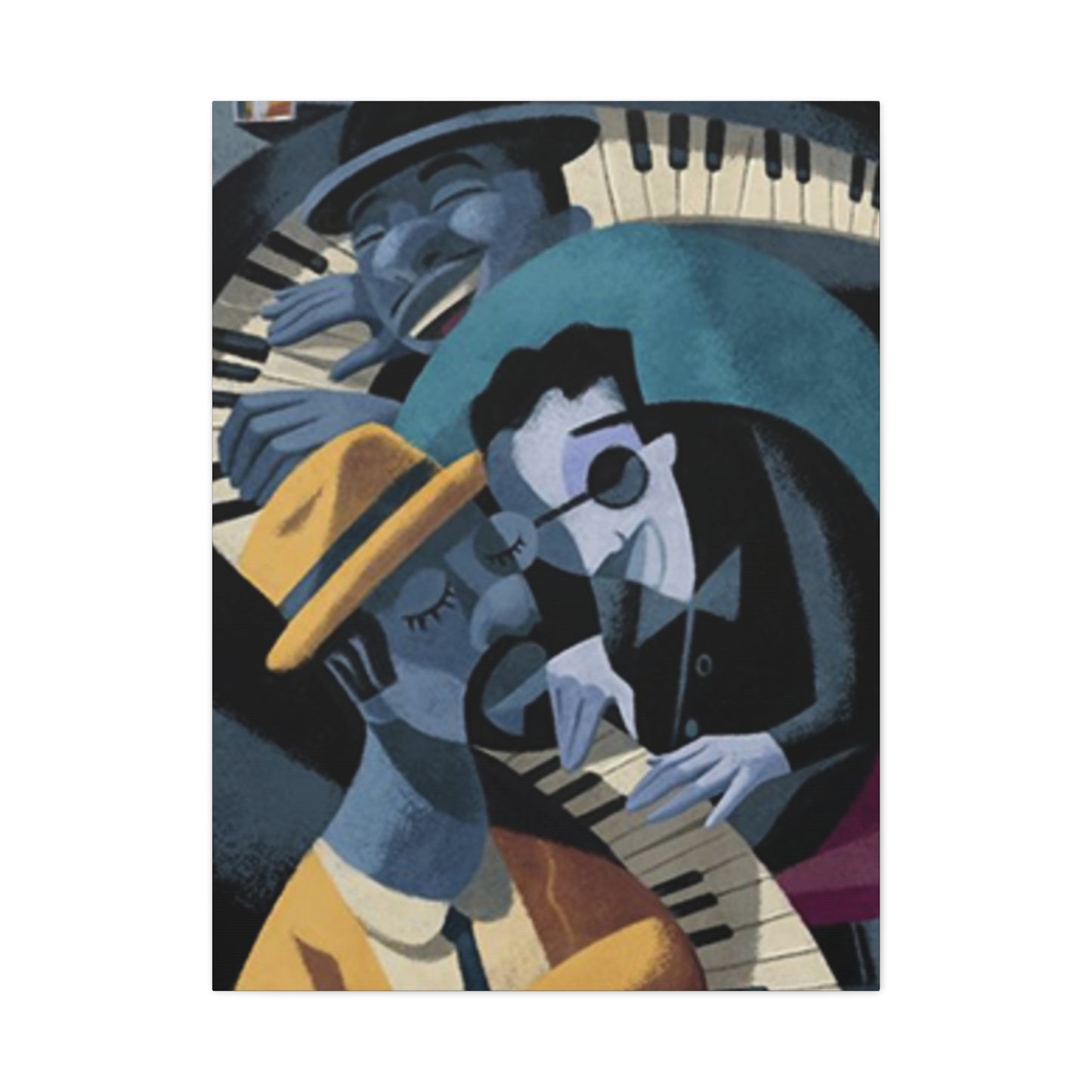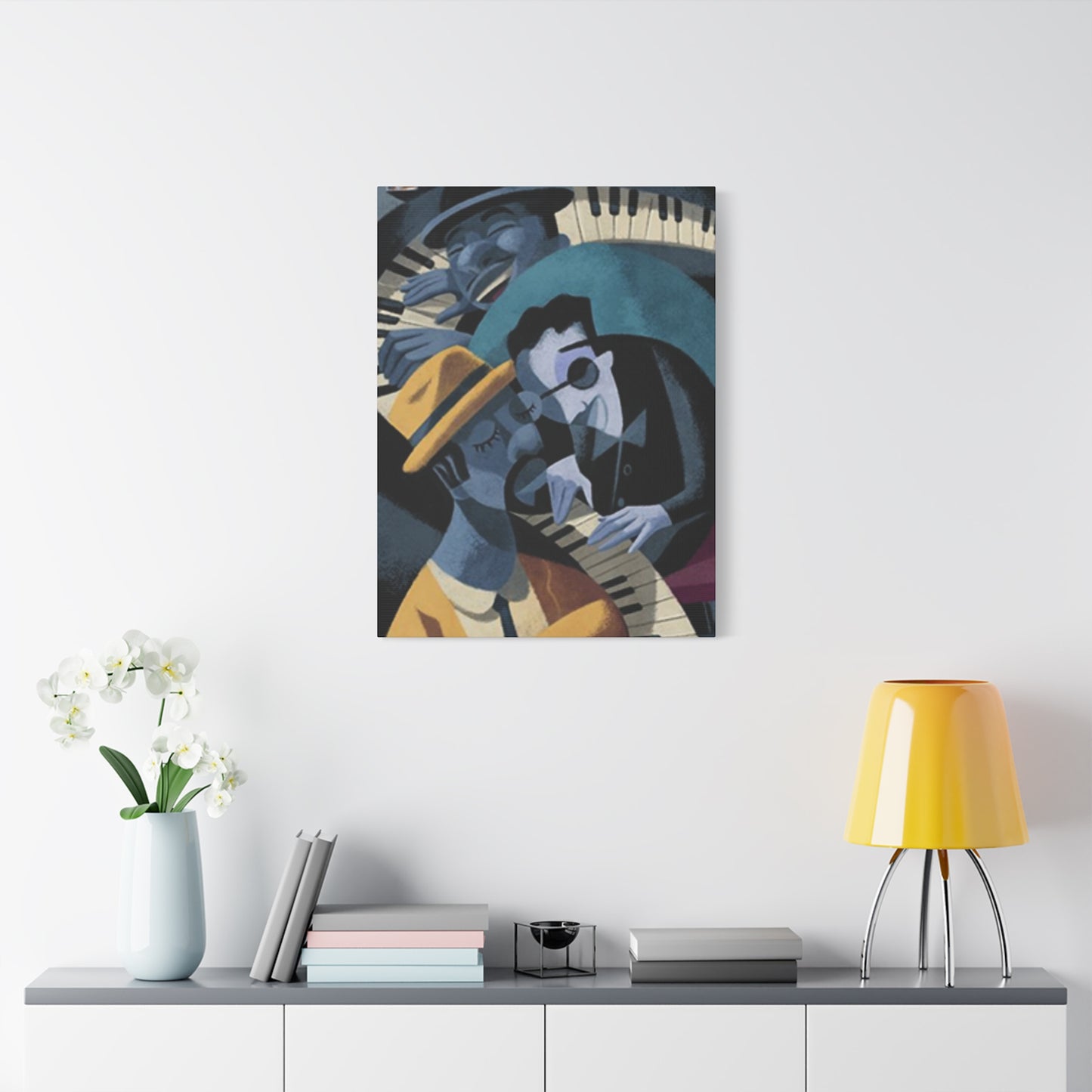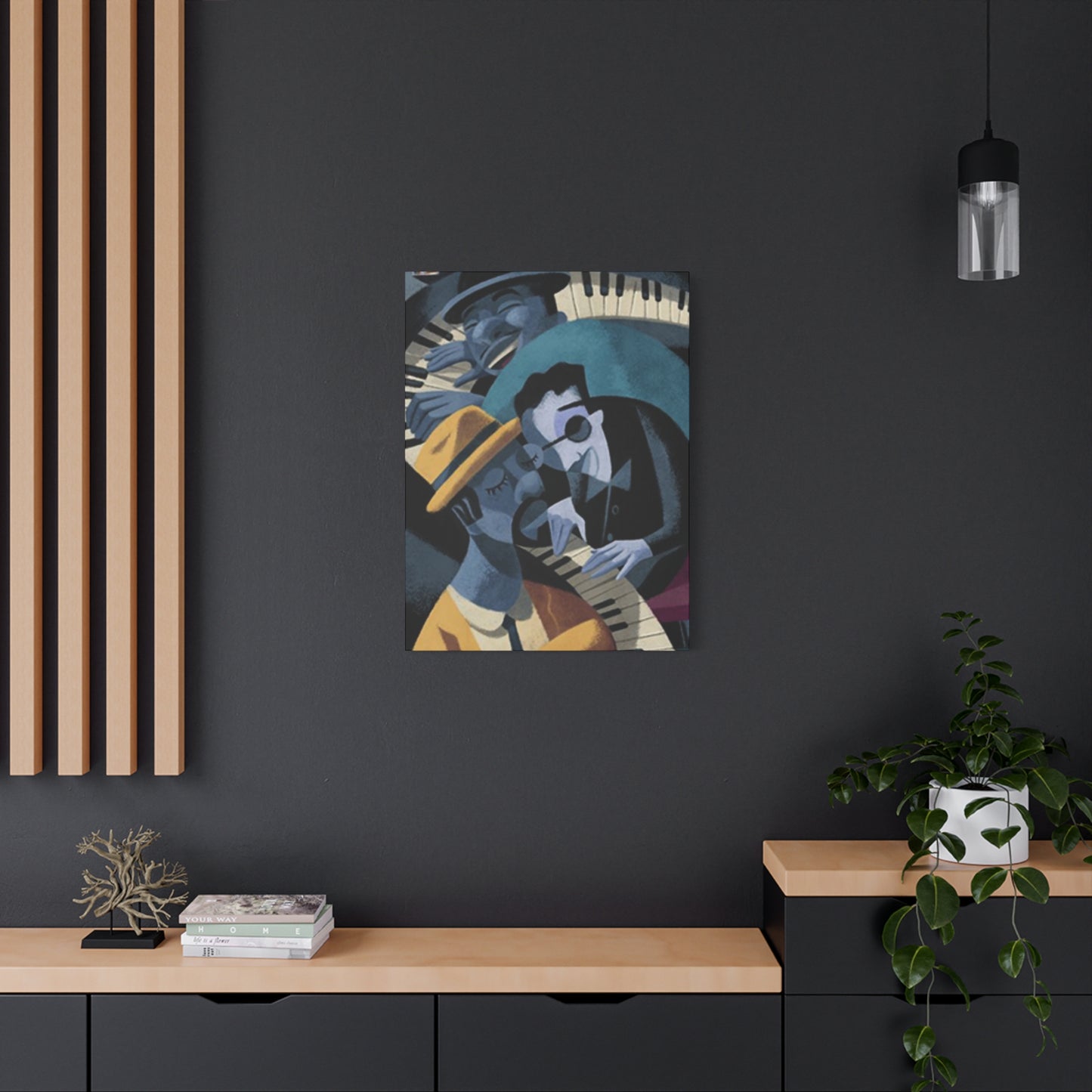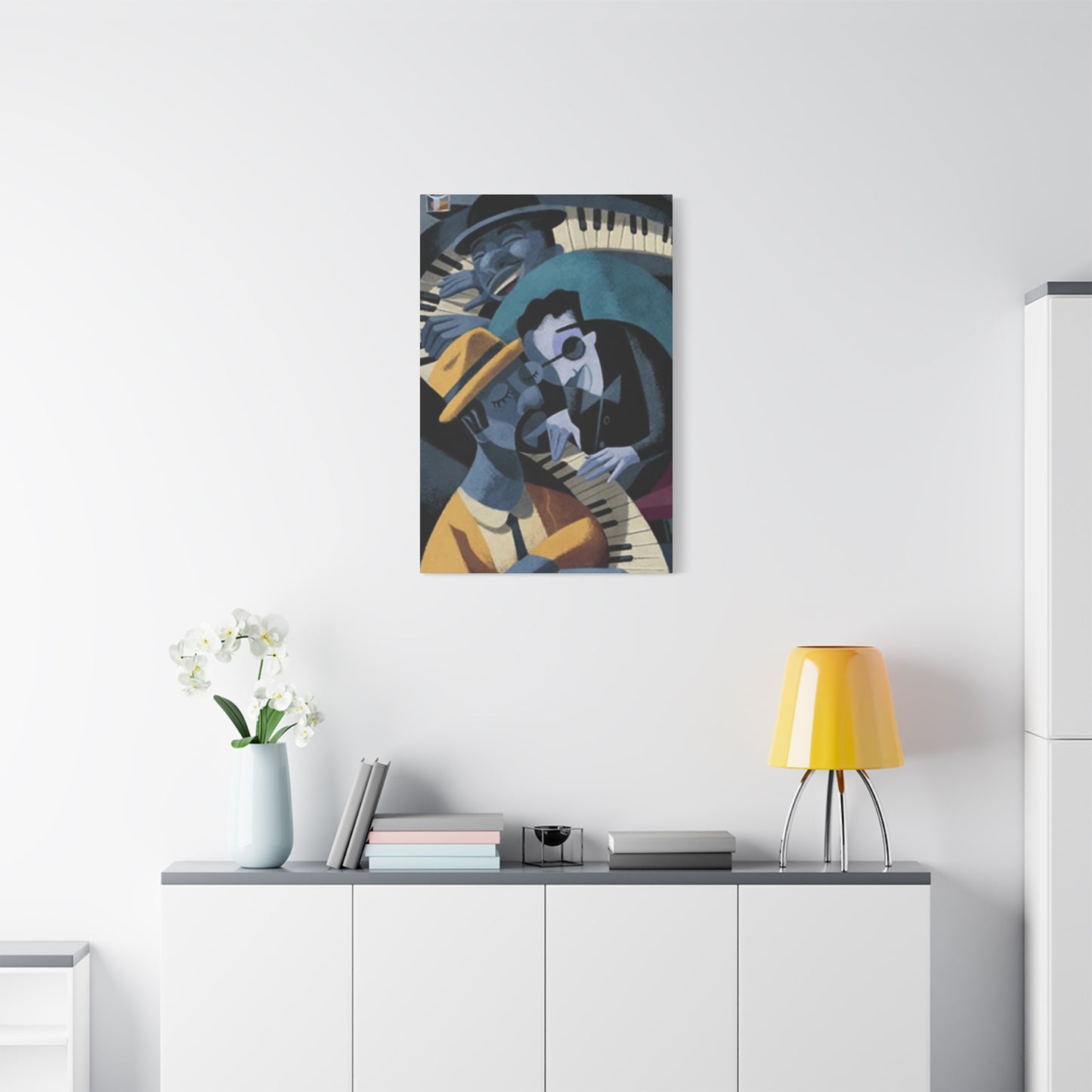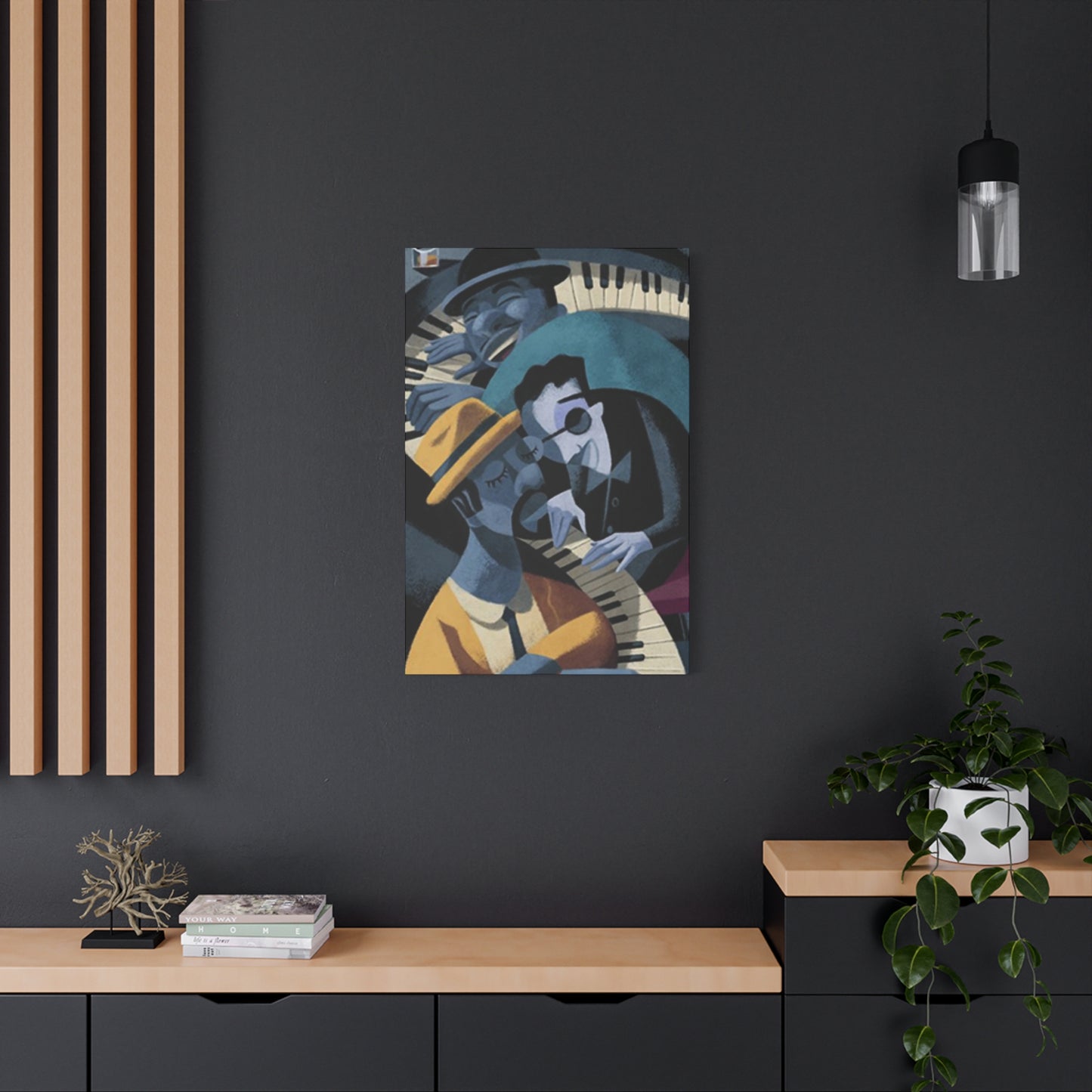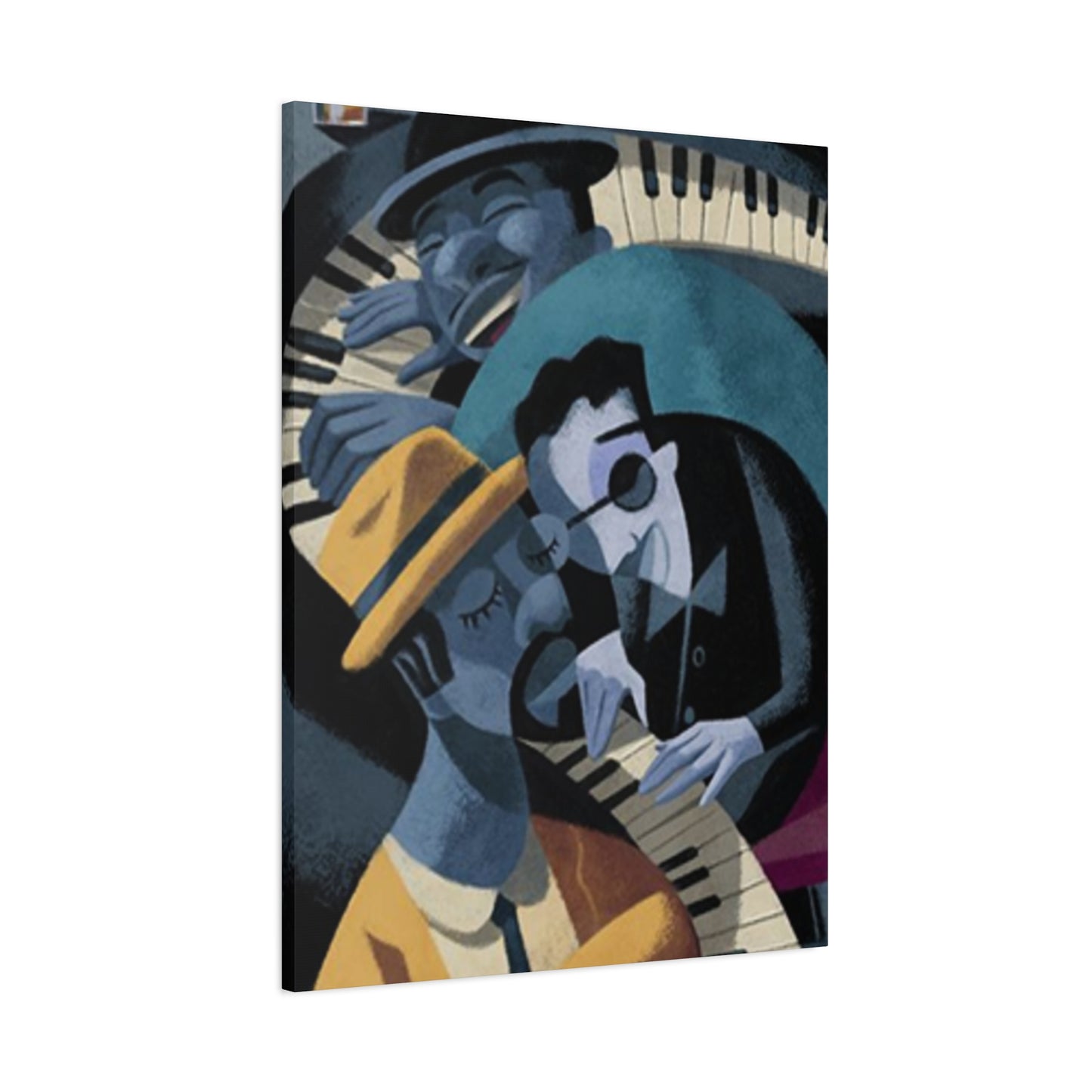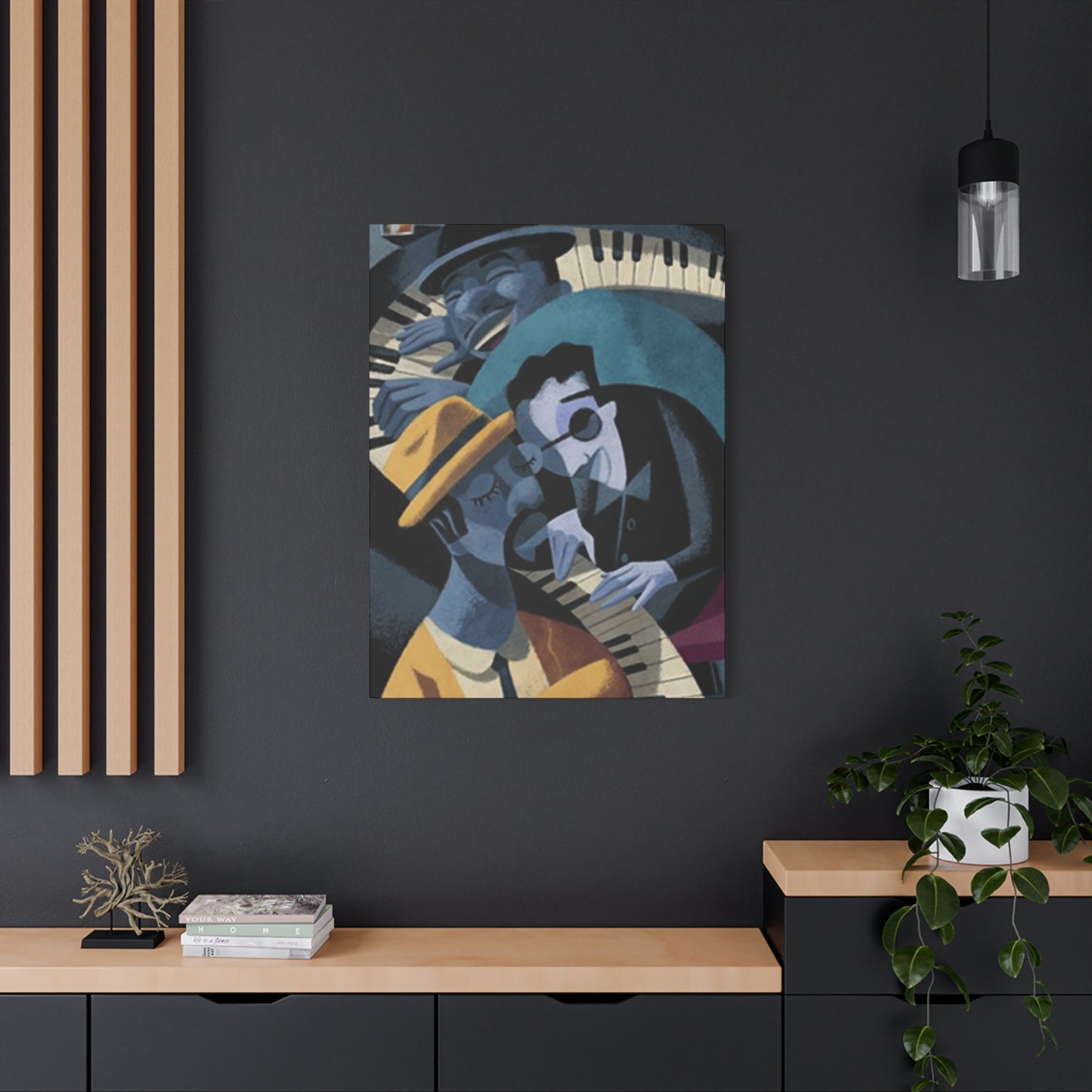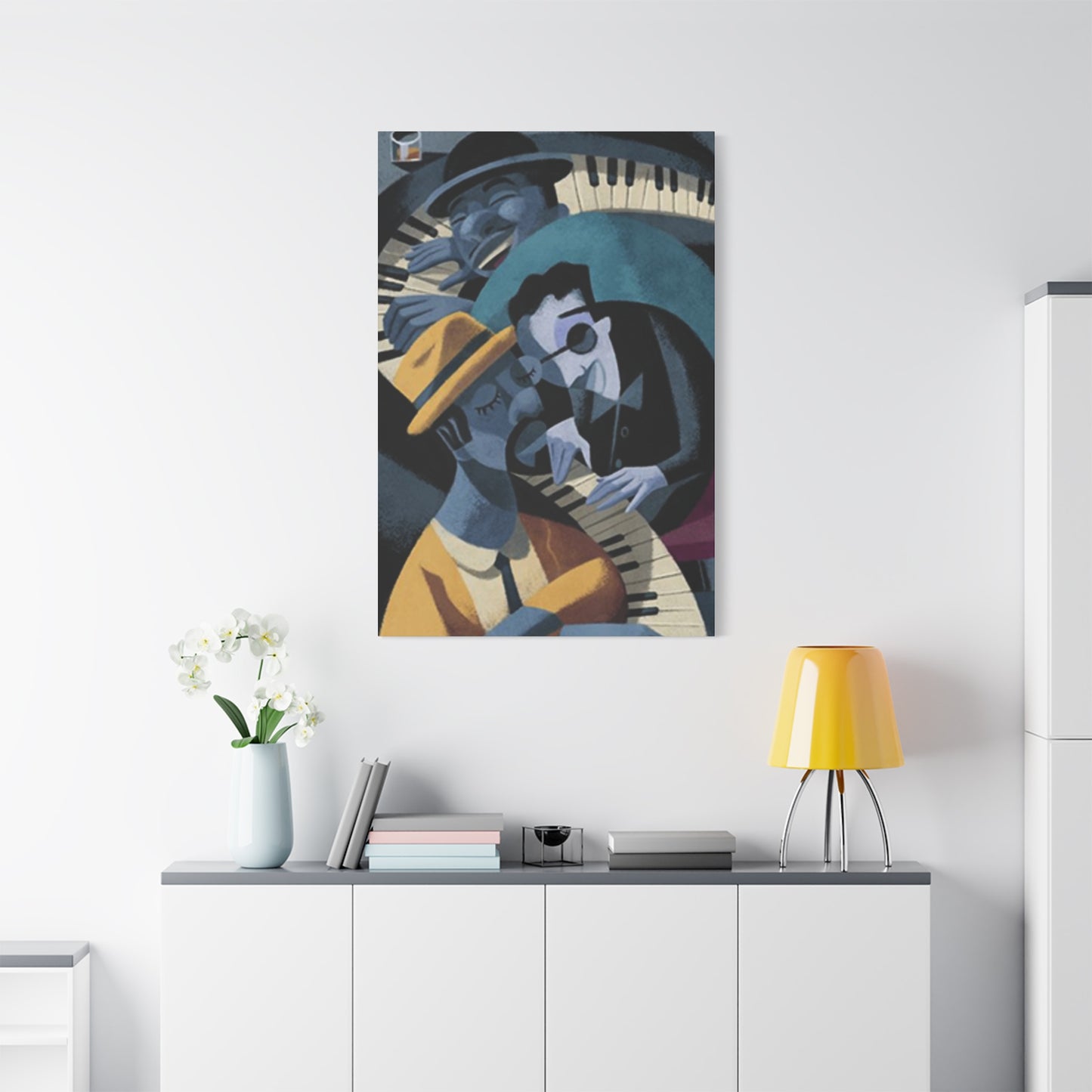Cartoon Piano Artists Wall Art & Canvas Prints
Cartoon Piano Artists Wall Art & Canvas Prints
Couldn't load pickup availability
The Art of Cartoon Piano Artists Wall Art: A Complete Resource for Music Aficionados and Interior Design Lovers
The realm of visual arts celebrating musical instruments has experienced remarkable growth over recent years, particularly in the niche of animated musician illustrations adorning living spaces. These creative pieces merge the whimsical charm of animated characters with the classical elegance of keyboard instruments, creating unique decorative elements that resonate with both music enthusiasts and art collectors. The phenomenon of cartoon piano artists wall art represents more than mere decoration; it embodies a cultural appreciation for musical heritage expressed through contemporary artistic mediums.
Throughout centuries, societies have sought ways to honor their musical traditions through visual representations. Ancient civilizations carved images of instrumentalists into temple walls, while Renaissance painters immortalized court musicians in elaborate portraits. The modern iteration of this tradition manifests through playful, animated depictions that make classical instruments accessible and appealing to broader audiences, particularly younger generations who might otherwise perceive keyboard instruments as intimidating or outdated.
These artistic creations serve multiple purposes beyond aesthetic enhancement. They function as conversation starters, educational tools, and expressions of personal identity. When homeowners select pieces featuring animated keyboard players, they communicate their values, interests, and cultural affiliations to visitors. The selection process itself becomes an act of self-expression, as individuals curate collections that reflect their unique personalities and experiences with music.
The democratization of art through affordable prints and digital reproductions has made it possible for average households to display sophisticated imagery that was once reserved for wealthy patrons. This accessibility has transformed interior spaces, allowing people from diverse socioeconomic backgrounds to celebrate their passion for music through visual mediums. The whimsical nature of animated representations removes the elitism sometimes associated with classical music imagery, creating inclusive environments that welcome all appreciation levels.
Cultural critics have observed that animated musician artwork bridges generational divides within families. Grandparents who grew up with traditional concert hall experiences find common ground with grandchildren raised on digital entertainment when discussing these playful yet respectful representations of musical instruments. This intergenerational appeal makes such artwork particularly valuable in family gathering spaces where multiple age groups congregate.
How Animated Keyboard Player Illustrations Evolved Through Different Artistic Movements
The journey of stylized musician depictions began with early newspaper comic strips in the late nineteenth century, when illustrators first experimented with exaggerated character proportions and expressive faces. These pioneering artists laid groundwork for what would eventually become a sophisticated visual language capable of conveying complex emotions and narratives through simplified forms.
During the golden age of animation in mid-twentieth century, studios developed signature styles for depicting characters interacting with musical instruments. Animators discovered that certain visual shortcuts - oversized hands, elongated fingers, and dramatic facial expressions - effectively communicated the physical act of playing while maintaining entertainment value. These conventions became so deeply embedded in popular consciousness that contemporary artists continue referencing them when creating static illustrations.
The psychedelic movement of the nineteen sixties and seventies introduced vibrant color palettes and surrealistic elements into musician imagery. Artists began experimenting with impossible perspectives, fluid forms that seemed to melt or dance, and kaleidoscopic backgrounds that suggested the synesthetic experience of perceiving music visually. This experimental period expanded the vocabulary available to creators working with musician themes, proving that such imagery could venture far beyond literal representation.
Street art and graffiti culture contributed urban aesthetics to the genre during the late twentieth century. Bold outlines, spray paint textures, and irreverent attitudes toward classical subjects breathed new life into potentially staid imagery. Artists began depicting keyboard instruments in unexpected contexts - emerging from brick walls, floating in cosmic voids, or transformed into hybrid creatures - challenging viewers' preconceptions about how such subjects should appear.
The digital revolution of recent decades introduced unprecedented possibilities for creation and distribution. Artists gained access to tools allowing infinite color options, perfect symmetry when desired, and easy iteration through multiple design versions. Digital platforms enabled direct connections between creators and audiences, bypassing traditional gallery systems and allowing niche markets to flourish around specific themes like animated musician artwork.
Different Styles and Approaches in Creating Whimsical Keyboard Player Artwork
Minimalist interpretations strip the subject to essential elements, using simple geometric shapes and limited color palettes to suggest rather than explicitly depict keyboard players. These pieces rely on viewers' pattern recognition abilities, providing just enough visual information for minds to complete the image. The resulting artwork feels modern and sophisticated while remaining accessible to audiences unfamiliar with music notation or instrument mechanics.
Maximalist approaches embrace complexity and abundance, filling every available space with decorative elements, intricate patterns, and overlapping imagery. These busy compositions reward extended viewing, as observers discover new details with each examination. The density of visual information mirrors the layered complexity of musical compositions, creating parallel experiences between seeing and hearing.
Retro-inspired pieces deliberately reference specific historical periods, evoking nostalgia through carefully selected visual markers. Some artists channel nineteen fifties diner aesthetics with chrome accents and pastel color schemes, while others draw from nineteen twenties art deco geometry and metallic finishes. These temporal references add narrative depth, suggesting stories about when and where the depicted musical moments might have occurred.
Surrealist interpretations abandon realistic representation entirely, transforming keyboard instruments into impossible objects that defy physics and logic. Keys might flow like liquid, players could possess multiple arms or transparent bodies, and backgrounds might shift between contradictory perspectives within single compositions. These dreamlike qualities engage viewers' imaginations, inviting personal interpretation rather than prescribing specific meanings.
Photorealistic styles with cartoon elements blend traditional painting techniques with stylized character designs, creating uncanny juxtapositions between detailed environments and simplified figures. This approach grounds whimsical characters in believable spaces, suggesting they could plausibly exist in our world. The contrast between rendering styles emphasizes the fantastical nature of the characters while showcasing artists' technical versatility.
Materials and Production Methods Used for Contemporary Musician Wall Decorations
Canvas remains the most popular substrate for high-quality reproductions, offering texture that approximates original paintings while remaining affordable for mass production. Stretched over wooden frames, canvas prints gain dimensional presence that flat paper cannot match. The material accepts various ink types well, from traditional pigments to modern giclée processes that preserve color fidelity for decades when properly cared for.
Metal prints have gained popularity for their contemporary appearance and exceptional durability. The infusion process bonds inks directly to aluminum sheets, creating luminous images with extraordinary depth and vibrancy. These pieces suit modern interiors particularly well, their glossy surfaces and frameless presentations contributing to minimalist aesthetics. The medium proves especially effective for artwork featuring bold colors and high contrast, as the reflective substrate intensifies visual impact.
Wood panels offer organic warmth that complements rustic or bohemian interior styles. Artists can print directly onto prepared wood surfaces or mount papers and canvases to wooden backings. The visible grain patterns add textural interest that interacts with printed imagery, creating unique variations between ostensibly identical editions. Some creators deliberately allow wood characteristics to show through partially transparent inks, celebrating rather than concealing the substrate's natural qualities.
Acrylic face mounting protects prints behind clear plastic sheets, producing gallery-quality presentations with stunning clarity and color saturation. This method involves adhering paper prints to rigid backing boards, then laminating clear acrylic to the image surface. The result resembles glossy photographs but at much larger scales, suitable for making bold statements in spacious rooms. The technique works particularly well for highly detailed illustrations where viewers want to examine fine linework and subtle color transitions.
Traditional framing with matting and glazing remains relevant for collectors seeking classic presentations. Quality frames protect artwork from environmental damage while adding visual weight and formality. Mat boards provide breathing space around images, preventing compositions from feeling cramped or overwhelmed by frames. Various glass and acrylic glazing options filter harmful ultraviolet light, preserving colors and preventing fading over time.
Selecting Appropriate Sizes and Proportions for Various Living Spaces
Small accent pieces ranging from eight to twelve inches work beautifully in intimate settings like powder rooms, narrow hallways, or crowded gallery walls where multiple artworks compete for attention. These modest dimensions allow detailed examination without overwhelming limited square footage. They function well as components within larger arrangements, providing visual rhythm through repetition or variation on themes.
Medium formats between sixteen and thirty inches suit most residential applications, offering substantial presence without dominating rooms. These versatile sizes work above furniture pieces like sofas and consoles, anchoring arrangements while leaving space for complementary decorative objects. The dimensions provide enough surface area for appreciating artistic details from typical viewing distances while remaining manageable for hanging and repositioning.
Large statement pieces exceeding forty inches command attention and define spaces through their sheer scale. These imposing artworks function as focal points around which other design elements orbit. They work best in rooms with high ceilings and ample wall space, where their proportions feel balanced rather than oppressive. Viewers can appreciate both overall compositions from distance and intricate details upon closer approach.
Panoramic formats with extreme width-to-height ratios suit specific architectural situations like long walls above seating areas or spaces above doorways and windows. These unusual proportions create horizontal emphasis that can make rooms feel wider or calm vertically dramatic spaces. They work particularly well for depicting multiple musicians or showing keyboard instruments in context with surrounding environments.
Triptychs and multi-panel arrangements allow for creative storytelling across connected but separate surfaces. These segmented compositions can follow musical progressions, show different perspectives on single scenes, or present thematic variations on common subjects. The gaps between panels create natural visual breaks that can align with architectural features or furniture placement, helping artwork integrate seamlessly with existing room layouts.
Color Theory Considerations When Choosing Animated Musician Artwork
Warm color palettes dominated by reds, oranges, and yellows evoke energy, passion, and comfort. These hues suit social spaces like living rooms and dining areas where people gather for conversation and entertainment. Artwork featuring sunset tones or golden accents brings inviting warmth to spaces, making them feel cozier and more intimate. The psychological associations with fire and sunlight trigger primal responses that make viewers feel welcomed and energized.
Cool palettes emphasizing blues, greens, and purples create calming environments conducive to relaxation and concentration. These tones work well in bedrooms, home offices, and meditation spaces where tranquility proves valuable. The associations with water, sky, and twilight help rooms feel more spacious and airy, particularly beneficial in smaller areas where warm colors might make spaces feel confined.
Monochromatic schemes using single color families at various saturations and values offer sophisticated elegance with minimal visual complexity. These restrained palettes prevent artwork from clashing with existing decor while maintaining strong graphic impact through contrast between light and dark areas. They suit minimalist interiors where bold color would disrupt carefully balanced neutral environments.
Complementary color combinations placing opposite hues from color wheels in proximity create maximum vibrancy and visual tension. These dynamic pairings - purple with yellow, blue with orange, red with green - command attention and energize spaces. Artists use complementary schemes when they want artwork to leap off walls and dominate viewer awareness, making them ideal for statement pieces in otherwise understated rooms.
Analogous harmonies using adjacent color wheel segments produce gentle transitions and unified feelings. These related hues share underlying pigments, creating natural cohesion that feels organic rather than forced. Such palettes work beautifully in spaces decorated with multiple artworks, as the similar color foundations help disparate pieces feel intentionally coordinated rather than randomly assembled.
Understanding Different Character Styles in Animated Musician Illustrations
Classic cartoon aesthetics draw from early animation pioneers, featuring rounded forms, exaggerated proportions, and simple facial features reminiscent of beloved characters from animation's golden era. These nostalgic styles evoke childhood memories and simpler times, creating emotional connections through familiar visual languages. The timeless quality ensures such artwork remains relevant across changing design trends, making it suitable for long-term display.
Manga and anime influences bring distinctive Japanese graphic novel characteristics including large expressive eyes, dynamic action lines, and elaborate hairstyles. These styles appeal to audiences raised on Japanese entertainment exports and collectors interested in cross-cultural artistic exchanges. The dramatic intensity typical of manga aesthetics adds emotional weight to musical subjects, suggesting profound connections between performers and their instruments.
Abstract interpretations deconstruct recognizable forms into geometric components, color fields, and gestural marks. These sophisticated approaches appeal to viewers who appreciate conceptual art and prefer suggestions over literal depictions. The ambiguity invites personal interpretation, with different observers potentially reading entirely different narratives into identical compositions based on their individual experiences and associations.
Chibi styles employ super-deformed proportions with oversized heads and tiny bodies, creating irresistibly cute character designs. These exaggerated ratios emerged from Japanese pop culture but have achieved global recognition through their inherent appeal. The innocent, childlike quality makes such artwork appropriate for family spaces and children's rooms while retaining enough sophistication for adult appreciation.
Vector-based designs showcase the digital tools used in their creation, featuring impossibly smooth curves, perfect gradients, and crisp edges achievable only through computer graphics. The mathematical precision gives these pieces contemporary technological associations, making them feel current and forward-looking. The clean execution appeals to viewers who appreciate craftsmanship and attention to detail, even when the subject matter remains whimsical.
Psychological Effects of Displaying Musical Instrument Imagery in Living Environments
Research in environmental psychology demonstrates that visual references to music can prime positive emotional states even without actual sound. The mere sight of instruments triggers associations with pleasurable listening experiences, activating neural pathways connected to reward centers. This phenomenon explains why people often report feeling happier and more relaxed in spaces decorated with musical imagery, independent of whether actual music plays.
The presence of artistic representations acknowledging creative pursuits validates residents' identities as culturally engaged individuals. For amateur musicians, displaying instrument imagery reinforces commitment to practice and improvement by keeping musical goals visually prominent. For non-players who appreciate music as listeners, such artwork proclaims membership in communities that value artistic expression and cultural enrichment.
Colors and compositions affect mood through well-documented pathways that designers exploit when creating intentional atmospheres. Vibrant, dynamic artwork featuring energetic characters stimulates mental activity and conversation, making such pieces suitable for social areas. Calmer compositions with gentle color progressions and peaceful character expressions promote relaxation, working well in private retreats where decompression matters.
Whimsical subject matter provides psychological relief from daily stresses by introducing playfulness into environments. The cognitive dissonance between serious classical instruments and silly cartoon characters creates gentle humor that softens spaces without resorting to crude jokes or aggressive comedy. This lighthearted quality makes homes feel more welcoming and less formal, encouraging residents and guests to relax and be themselves.
Symbolic associations with keyboard instruments carry cultural weight that enhances perceived sophistication. Pianos particularly evoke refinement, discipline, and cultural literacy due to their prominent roles in Western classical traditions. Displaying such imagery signals intellectual curiosity and appreciation for high culture, even when expressed through accessible cartoon formats that avoid pretension.
Placement Strategies for Maximum Visual Impact in Different Room Types
Living rooms benefit from larger pieces positioned above primary seating areas, creating focal points that anchor furniture arrangements. Artwork should hang at eye level when seated, typically lower than in standing-circulation spaces. Groupings of related pieces can flank fireplaces or entertainment centers, providing visual balance while reinforcing musical themes through repetition and variation.
Bedrooms require careful consideration of colors and imagery to support restful sleep rather than stimulation. Artwork featuring calm, contemplative musicians in soothing color palettes works better than energetic performers in vibrant hues. Positioning pieces where they're visible from bed provides pleasant views while lying down, but avoid overwhelming proportions that might feel oppressive in vulnerable resting states.
Home offices need inspiring imagery that promotes focus and productivity without becoming distracting. Moderately sized pieces positioned within peripheral vision keep creative inspiration accessible without demanding constant attention. Music-themed artwork reminds workers that tasks have larger purposes beyond immediate deadlines, connecting daily efforts to broader cultural and creative contexts.
Children's rooms offer opportunities for more adventurous, playful selections that reflect youthful energy and imagination. Bright colors, dynamic compositions, and humorous character expressions engage young viewers while introducing musical concepts in approachable formats. Positioning artwork at children's eye levels rather than adult heights makes pieces more accessible and personally relevant to young residents.
Dining areas benefit from artwork that sparks conversation without overwhelming meals. Medium-sized pieces positioned on walls facing diners provide visual interest during gatherings while maintaining appropriate scale relative to tables and chairs. Musical themes prove particularly suitable for dining spaces, as meals and music share deep connections in human social rituals across cultures.
Protecting and Preserving Artwork Quality Over Extended Periods
Direct sunlight represents the primary threat to artwork longevity, as ultraviolet radiation breaks down pigments and substrates over time. Position pieces away from windows receiving intense light exposure, or use UV-filtering glazing and window treatments to minimize damage. Even brief daily sun exposure accumulates into significant fading over months and years, so vigilance about lighting conditions pays long-term dividends.
Humidity fluctuations cause materials to expand and contract, potentially creating warping, cracking, or delamination. Maintain relatively stable indoor climates between forty and sixty percent relative humidity when possible. Avoid hanging artwork directly above heating vents, radiators, or air conditioning units where temperature swings prove most dramatic. Bathrooms and kitchens pose particular challenges due to steam and moisture, requiring special consideration.
Dust accumulation dulls surfaces and can embed in textures, proving difficult to remove without damage. Regular light dusting with soft, dry cloths maintains appearance and prevents buildup. For framed pieces under glass, clean glazing with appropriate products, avoiding overspray onto frames or allowing moisture to seep behind glazing. Canvas and unprotected prints require gentler approaches using specialized art cleaning tools.
Physical damage from impacts, scratches, or punctures necessitates careful placement away from high-traffic areas where accidents occur. Avoid hanging artwork above pieces where people might lean or place objects. In homes with children or pets, consider positioning valuable pieces higher on walls where curious hands and paws cannot reach. Corner and edge protections help in particularly vulnerable locations.
Professional conservation becomes necessary when valuable pieces show signs of deterioration beyond simple cleaning. Qualified conservators can repair tears, stabilize flaking pigments, and restore faded colors using museum-grade materials and reversible methods. While expensive, proper restoration preserves investment value and ensures continued enjoyment for decades beyond what improper DIY repairs might achieve.
Budget-Conscious Approaches to Building Musical Artwork Collections
Print-on-demand services allow access to vast image libraries without requiring artists to maintain expensive inventory. These platforms connect creators with consumers directly, eliminating middlemen and reducing costs. Buyers can order exact quantities needed in preferred sizes and substrates, customizing purchases to specific requirements. The model supports independent artists while providing affordable options for budget-conscious collectors.
Digital marketplaces host thousands of artists offering instant downloads of print files, allowing buyers to handle printing through local services. This approach provides maximum flexibility regarding materials, sizes, and framing while supporting artists through licensing fees. The digital format eliminates shipping costs and time, making projects movable at personal pace without pressure from delivery schedules.
Local art shows, craft fairs, and student exhibitions offer opportunities to purchase original works directly from emerging artists at accessible price points. These venues support creative communities while providing collectors with unique pieces unavailable through mass market channels. Building relationships with developing artists can yield long-term collecting opportunities as careers progress and values potentially appreciate.
Rotating seasonal displays allow limited collections to feel fresh and dynamic without constant new purchases. Store pieces not currently displayed in archival conditions, swapping them periodically to prevent visual fatigue while extending effective collection size. This approach also protects artwork from continuous light exposure, potentially preserving quality better than permanent display.
DIY framing using materials from craft retailers dramatically reduces costs compared to custom framing services. Pre-cut mats and standard-sized frames accommodate common print dimensions, while basic tools and patience allow for professional-looking results. Online tutorials provide guidance through processes that initially seem intimidating but become manageable with practice.
How Different Music Genres Influence Visual Representation Styles
Classical music imagery often emphasizes elegance and refinement through formal character postures, rich color palettes, and references to concert hall settings. Artists might depict musicians in stylized formal wear or period costumes reflecting specific compositional eras. The visual language mirrors the structured, complex nature of classical compositions, with balanced compositions and careful attention to proportional relationships.
Jazz themes inspire loose, improvisational visual approaches featuring dynamic asymmetry, unexpected color juxtapositions, and gestural mark-making. Characters might appear mid-motion with exaggerated expressions suggesting passionate performance. Backgrounds often incorporate urban nightlife elements or abstract patterns evoking syncopated rhythms and harmonic complexity. The overall effect mirrors jazz's spontaneous, emotionally immediate character.
Rock and pop influences bring bold graphics, high contrast, and rebellious attitudes to keyboard player depictions. Electric instruments might feature prominently alongside traditional pianos, with visual effects suggesting amplification and electronic modification. Color schemes tend toward saturated primaries and neons, creating maximum visual impact. Character designs often include countercultural fashion elements and anti-establishment postures.
Blues imagery evokes historical roots through vintage styling, limited color palettes suggesting aged photographs, and references to rural or urban working-class environments. Characters might appear weathered or contemplative, reflecting the genre's themes of struggle and perseverance. Visual textures often mimic worn materials, scratched surfaces, and faded pigments, lending emotional weight through implied history.
Contemporary electronic music inspires futuristic, digital aesthetics featuring synthesizer representations rather than acoustic instruments. Geometric patterns, gradients, and glowing elements suggest computer interfaces and virtual environments. Characters might appear stylized to the point of abstraction, merging with instrument representations into hybrid forms that question boundaries between performer, instrument, and sound.
Seasonal and Holiday Variations in Musical Theme Artwork
Winter holiday selections often incorporate traditional festive colors alongside musical imagery, creating warm celebratory atmospheres. Characters might wear seasonal attire or interact with decorative elements while maintaining focus on keyboard instruments. These limited-time displays allow collectors to refresh spaces periodically without committing to year-round themes that might become tiresome.
Spring themes emphasize renewal and growth through pastel palettes, floral elements, and outdoor settings. Musicians might appear in garden scenes or surrounded by blooming plants, connecting musical creativity with natural cycles. The lighter color schemes provide refreshing contrast to heavier winter displays, signaling seasonal transitions within interior environments.
Summer imagery celebrates leisure and relaxation through bright, saturated colors and casual character presentations. Beach scenes, outdoor concerts, and informal performance settings reflect the season's recreational spirit. The energetic, carefree compositions mirror longer days and vacation mindsets, transforming spaces into mental escapes from routine obligations.
Autumn selections incorporate harvest colors and cozy interior settings, preparing homes for colder months ahead. Warmer palettes featuring oranges, browns, and deep reds create comforting atmospheres while maintaining musical themes. Characters might appear in domestic scenes suggesting intimate home performances, reinforcing nesting instincts as days shorten.
Holiday-specific pieces for various cultural celebrations allow diverse households to honor traditions through musical artwork. These specialized selections might reference specific cultural instruments alongside cartoon representations, bridging heritage with contemporary aesthetics. The targeted nature makes such pieces particularly meaningful for individuals maintaining connections to cultural roots.
Creating Cohesive Gallery Wall Arrangements with Mixed Musical Themes
Grid layouts provide structured organization that works well with varied artwork sizes and styles. Maintaining consistent spacing between pieces creates visual rhythm that unifies disparate elements. This approach suits collectors with multiple small to medium works who want organized presentations without rigid matching. The predictable structure allows eyes to process complex arrangements without confusion.
Salon-style arrangements embrace controlled chaos, grouping pieces organically around central focal works. This traditional approach accommodates diverse frame sizes and orientations while maintaining overall balance through careful attention to visual weight distribution. The informal organization creates dynamic, lived-in appearances suggesting collections built gradually over time rather than purchased as matched sets.
Linear progressions arrange pieces in rows or columns, creating clean horizontal or vertical emphasis. This simplified approach works well in architectural spaces with strong linear qualities, reinforcing existing structural elements. The orderly presentation suits modernist interiors where excessive visual complexity might conflict with minimalist design philosophies.
Thematic clustering groups related works together while separating distinct concepts through spacing and positioning. Musical artwork might occupy one wall section while other subjects inhabit separate areas, creating multiple focal zones within larger rooms. This territorial approach allows passionate collectors to display diverse interests without forcing unnatural integrations between incompatible subjects.
Asymmetrical balance achieves equilibrium through strategic placement of dissimilarly sized pieces. A large work on one side might balance two or three smaller pieces on the opposite side, creating visual stability without perfect symmetry. This sophisticated approach requires careful planning but yields dynamic results that reward extended viewing.
Incorporating Musical Artwork into Various Interior Design Styles
Minimalist spaces demand restraint, with carefully selected individual pieces providing focal interest without cluttering clean environments. Simple frames or frameless mounting maintains uncluttered aesthetics, while artwork itself should favor clean lines and limited color palettes. The contrast between sparse surroundings and singular artistic statements intensifies impact through isolation.
Scandinavian design principles embrace functionality and coziness, suggesting modest-sized pieces in natural wood frames or simple white borders. Artwork colors should complement neutral base palettes while introducing warmth through moderate color saturation. The overall effect should feel welcoming and human-scaled rather than imposing or pretentious.
Industrial aesthetics pair well with raw canvas edges, metal prints, or artwork incorporating urban visual elements. Exposed hanging hardware and utilitarian framing materials maintain consistency with architectural features like exposed brick, concrete, and metal structures. The juxtaposition between rough industrial elements and whimsical cartoon subjects creates interesting tension that defines the style.
Bohemian interiors welcome eclectic collections with diverse frames, styles, and arrangements. Maximum artistic expression through color, pattern, and unconventional compositions aligns with the style's free-spirited philosophy. Musical themes integrate easily alongside other subjects, contributing to rich visual tapestries that reflect collector personalities.
Traditional spaces require more formal presentations with substantial wooden frames, matting, and careful positioning relative to architectural features like moldings and wainscoting. Artwork should respect room proportions and period appropriate color palettes while introducing contemporary cartoon elements that prevent spaces from feeling museum-like or overly serious.
The Role of Famous Composers and Musicians in Cartoon Art Inspiration
Historical figure caricatures allow contemporary audiences to engage with classical composers through approachable, humanized representations. Exaggerated features and playful expressions make legendary musicians feel accessible rather than intimidating. These pieces often incorporate biographical elements or famous compositions into visual designs, creating educational opportunities alongside aesthetic pleasure.
Fictional character mashups blend recognizable animated personalities with musician identities, creating humorous juxtapositions that appeal to pop culture enthusiasts. These crossover concepts generate immediate recognition and delight through unexpected combinations. The approach democratizes classical music by associating it with beloved entertainment figures, potentially attracting audiences who might otherwise dismiss the genre.
Generic archetypal representations avoid specific individuals while capturing essential characteristics of different musical roles. The anonymous player becomes universal everyman, allowing viewers to project personal associations onto characters. This approach avoids potential copyright complications while maintaining broad appeal across diverse audiences with different musical preferences.
Period-specific styling places cartoon musicians in historical contexts, educating viewers about music's evolution through visual environment cues. Baroque, Classical, Romantic, and Modern eras each possessed distinctive aesthetic characteristics that artists can reference through costume, architecture, and decorative elements. These temporal markers add narrative depth while celebrating music's rich heritage.
Contemporary performer tributes honor living musicians through stylized portraits that capture essential qualities without exact likeness. These respectful homages celebrate current artists' contributions while avoiding unauthorized commercial exploitation of identities. The balance between recognition and artistic interpretation requires skill but yields pieces appealing to dedicated fan bases.
Environmental Factors Affecting Artwork Longevity and Color Preservation
Temperature extremes stress materials through expansion and contraction cycles that gradually compromise structural integrity. Maintain moderate, stable temperatures ideally between sixty-five and seventy-five degrees Fahrenheit for artwork preservation. Avoid placing pieces near exterior walls in poorly insulated buildings where temperature fluctuations prove most dramatic during seasonal transitions.
Air quality concerns include dust, pollution particles, and chemical vapors that deposit on surfaces or cause chemical reactions degrading materials. Urban environments with high pollution levels pose greater risks than rural locations. Regular air filter changes and avoiding aerosol products near artwork helps minimize exposure to harmful particulates and volatile compounds.
Pest infestations can destroy paper-based artwork through direct consumption and staining from waste products. Insects like silverfish, beetles, and moths target cellulose materials, while rodents may chew edges or nest behind framed pieces. Regular inspections and maintaining clean, dry conditions discourage infestations, with professional extermination necessary if problems develop.
Mold and mildew growth occurs in humid conditions, creating irreversible staining and potentially destroying substrates. Prevention through humidity control proves far easier than remediation after problems emerge. Visible mold requires immediate professional assessment, as amateur cleaning attempts often spread spores and cause further damage.
Chemical interactions between mounting materials can cause discoloration or degradation over time. Acidic mats, backing boards, and adhesives gradually transfer compounds to artwork, creating yellowing, brittleness, and deterioration. Museum-quality archival materials cost more initially but preserve artwork value through chemically stable composition that prevents harmful interactions.
Custom Commissioning Processes for Personalized Musical Character Artwork
Initial consultations establish project parameters including sizes, styles, color preferences, and specific requirements for subject matter. Clear communication during this phase prevents misunderstandings and ensures finished pieces meet expectations. Sharing reference images of preferred artistic styles helps artists understand aesthetic goals more effectively than verbal descriptions alone.
Concept sketches provide opportunities for feedback before substantial work begins. These preliminary drawings establish compositions, character designs, and general approaches while remaining flexible enough for adjustments. Multiple rounds of revision might occur depending on project complexity and how closely initial concepts align with client visions.
Detailed rendering transforms approved concepts into finished artwork with full color, final details, and complete technical execution. Artists make countless decisions during this phase, from exact color values to texture applications and finishing techniques. Clients typically receive progress updates but have limited revision opportunities once rendering reaches advanced stages, as fundamental changes become increasingly difficult and expensive.
Final approval confirms client satisfaction before delivery preparations begin. This stage allows for minor tweaks addressing unexpected color reproduction issues or small technical problems that emerged during production. Major changes at this point typically incur additional fees, emphasizing importance of thorough earlier-stage reviews.
Delivery and installation might include professional services for large or complex pieces requiring specialized hanging hardware or precise positioning. Artists or galleries may provide certificates of authenticity, care instructions, and documentation establishing provenance for valuable original works. Digital files accompanying physical pieces enable insurance documentation and future reproduction if desired.
Reproduction Rights and Licensing Considerations for Art Collectors
Original works convey full ownership of physical objects but not necessarily reproduction rights unless explicitly transferred. Collectors can display, resell, or donate originals but typically cannot create prints, merchandise, or derivative works without artist permission. This distinction proves important for collectors considering future commercial exploitation of imagery.
Limited edition prints maintain value through scarcity artificially created by restricting production quantities. Artists typically number editions and sometimes destroy printing plates or files after designated quantities complete. Collectors should verify edition details and obtain documentation establishing legitimate provenance within declared limitations.
Open edition prints lack production limits, making them more affordable but potentially less valuable for collectors prioritizing investment appreciation. The unlimited availability means monetary value remains modest even as artwork ages, though aesthetic and decorative value persists unchanged. These accessible options democratize art collecting for individuals prioritizing enjoyment over financial returns.
Licensing agreements allow commercial use of imagery for specified purposes, durations, and territories. Businesses decorating commercial spaces might license artwork rather than purchasing originals, gaining legal display rights while avoiding acquisition costs. Terms vary widely, with some licenses permitting sublicensing while others strictly limit usage to original licensees.
Copyright durations extend throughout artists' lifetimes plus seventy years in most jurisdictions, after which works enter public domains permitting unrestricted reproduction. Older artwork from deceased artists with expired copyrights offers collectors reproduction freedom unavailable with contemporary pieces. Verifying copyright status requires research into artist death dates and relevant jurisdictional laws.
Lighting Techniques That Enhance Artwork Presentation Without Causing Damage
Picture lights mounted directly above frames provide focused illumination that enhances colors and details while creating dramatic emphasis. LED options generate minimal heat compared to halogen predecessors, reducing damage risks while offering adjustable color temperatures matching artwork palettes. Battery-powered versions enable flexibility in placement without electrical wiring constraints.
Track lighting systems allow customizable configurations positioning multiple adjustable fixtures along ceiling-mounted rails. This versatility accommodates changing artwork arrangements and permits precise aiming for optimal illumination angles. Dimmers enable mood adjustments from bright examination lighting to subtle ambient glows during evening entertaining.
Recessed ceiling fixtures provide general illumination without visible hardware cluttering architectural lines. Angled trims direct light toward walls, washing surfaces with even coverage suitable for multiple artworks. The integrated appearance suits modern minimalist aesthetics where exposed lighting fixtures might feel visually disruptive.
Natural lighting through windows creates dynamic illumination varying throughout days and seasons. While beautiful, unfiltered daylight poses significant conservation risks through ultraviolet exposure and heat. UV-filtering glazing on both windows and artwork frames mitigates damage while preserving natural light's aesthetic qualities. Strategic positioning places artwork away from direct sun paths crossing rooms during high-intensity hours.
Accent lighting using portable lamps directs attention toward specific pieces during evening hours when ambient light fades. Adjustable arm lamps allow precision aiming while maintaining flexibility for furniture rearrangements. Warm-toned bulbs create cozy atmospheres complementing artwork colors, though cooler temperatures better reveal accurate hues for detailed examination.
Combining Musical Instrument Artwork with Actual Instrument Displays
Physical instruments displayed near related artwork create compelling thematic statements reinforcing musical identities. A keyboard positioned beneath cartoon pianist imagery establishes obvious connections while serving practical functions for active players. The juxtaposition between functional objects and decorative representations adds depth to both elements.
Display shelves accommodate smaller instruments, sheet music, and music-related collectibles alongside artwork, building comprehensive musical environments. Thoughtful arrangement prevents clutter through careful editing and strategic spacing. The accumulated items tell stories about musical journeys, favorite compositions, and evolving tastes through visual evidence of engagement.
Shadow boxes and deep frames enable three-dimensional displays incorporating instrument components, concert memorabilia, and related artifacts. These assemblages become artistic statements themselves while maintaining connections to musical themes established by surrounding artwork. The added dimensionality creates visual interest beyond flat picture surfaces.
Furniture choices can reinforce musical themes through instrument-shaped shelving, piano bench seating, or custom pieces incorporating musical notation decorative elements. These subtle touches build cohesive environments where every element contributes to unified design narratives. The approach creates immersive experiences rather than isolated decorative moments.
Acoustic considerations ensure displayed instruments maintain proper condition through climate control and positioning away from damaging environmental factors. Temperature and humidity fluctuations affecting artwork similarly threaten instrument integrity. Treating both artwork and instruments as valuable objects requiring care maintains their condition for long-term enjoyment.
Final Thoughts
In conclusion, the world of cartoon piano artists wall art presents an exciting and unique fusion of creativity, music, and design. This niche genre, blending the whimsical and playful elements of cartoons with the soulful and expressive world of music, offers an intriguing visual experience for both music lovers and interior design enthusiasts alike. Whether you’re looking to add a touch of personality to a living room, create an inspiring atmosphere in a music studio, or simply celebrate your passion for music through art, cartoon piano wall art offers something truly special.
What makes this genre of art so appealing is its ability to combine two seemingly unrelated elements—cartoonish imagery and the elegance of music. The playful, exaggerated features of cartoon characters bring an energetic, lively feel to spaces, while the piano, a symbol of grace and artistic expression, adds sophistication and depth. This unique combination creates a dynamic visual narrative that resonates with people from all walks of life. For music lovers, these artworks can serve as a homage to the timeless beauty of the piano, evoking emotions tied to classical music, jazz, or even modern genres, depending on the style of the piece.
One of the key draws of cartoon piano art is its ability to evoke nostalgia. Many people associate the whimsical, exaggerated forms of cartoons with childhood memories, innocence, and fun. By incorporating music into these nostalgic elements, artists manage to create a piece that resonates on multiple levels—both as an aesthetic object and a source of emotional connection. These artworks can become conversation starters, allowing people to share their own memories of learning to play the piano, attending concerts, or even their favorite musical cartoons.
Moreover, cartoon piano wall art can be customized to suit any style or personality. The wide range of artistic interpretations—from bold, abstract representations to more realistic and intricate designs—means that there’s a piece for everyone. Whether you prefer a colorful, modern take on the piano or a more vintage, retro-style cartoon representation, you can find a piece that perfectly complements your space and matches your unique style. The flexibility in design also allows these artworks to be integrated seamlessly into various interior design schemes, whether it's a cozy living room, a minimalist office, or a vibrant music studio.
For interior design enthusiasts, cartoon piano wall art offers the perfect opportunity to bring a touch of creativity and whimsy into the home or workspace. The art can serve as a focal point in a room, drawing the eye and creating a sense of fun and excitement. Whether paired with modern furniture, eclectic decor, or more traditional settings, cartoon piano art adds an element of joy and uniqueness that helps transform a space. It also provides a more approachable and light-hearted alternative to more formal or conventional music-themed art, making it ideal for spaces where creativity, inspiration, and a love for music are central to the ambiance.
Another exciting aspect of cartoon piano artists wall art is the accessibility of the art itself. Unlike high-end gallery pieces that may require a significant financial investment, many cartoon-style music artworks are available in various price ranges. From affordable prints and posters to more premium canvas and framed options, this art form allows both budding art collectors and casual decor enthusiasts to add a personalized touch to their spaces. Additionally, digital prints and online marketplaces make it easy for buyers to access a wide selection of works from artists all around the world, ensuring that there’s something for every budget.
For those interested in supporting emerging artists, the realm of cartoon piano wall art also provides an opportunity to discover new talent. Many artists who specialize in this genre offer their works through online platforms, independent galleries, or social media, making it easier than ever to explore fresh ideas and support creative minds. These pieces can offer a glimpse into the evolving intersection of art, music, and pop culture, often blending classical techniques with modern, experimental styles. For those who seek to add a unique, one-of-a-kind piece to their collection, this is an ideal avenue to explore.
From a broader perspective, the influence of cartoons and music in visual art is a reflection of the changing ways in which we experience and consume culture. Cartoons, once thought of as a purely children’s medium, have evolved into a versatile and expressive art form that resonates across age groups and demographics. Similarly, the piano, once a symbol of classical music’s highbrow status, is now embraced in numerous genres, from jazz and rock to pop and electronic music. Cartoon piano art represents this evolution, merging two cultural icons to create something timeless and universally appreciated.
As you consider adding cartoon piano wall art to your collection or your home, it’s essential to think about the emotional connection the piece evokes. Art has the power to transport you to a different time and place, triggering memories or inspiring new emotions. Whether the artwork reminds you of your childhood piano lessons or the joy of attending a concert, it serves as more than just decoration. It becomes a reflection of your personal journey with music and the way it has shaped your life.
In summary, cartoon piano artists wall art offers a playful, creative, and expressive way to celebrate the connection between music and art. Its ability to bridge the worlds of nostalgia, fun, and sophistication makes it a versatile choice for anyone looking to enhance their living space. Whether you're a music lover, an interior design enthusiast, or someone seeking to add an artistic flair to your home, these unique pieces of art can elevate your environment while sparking conversation and inspiration. With its vast array of styles, designs, and emotional depth, cartoon piano art will undoubtedly continue to be a favorite choice for those who want to bring both music and creativity into their homes.
Share


